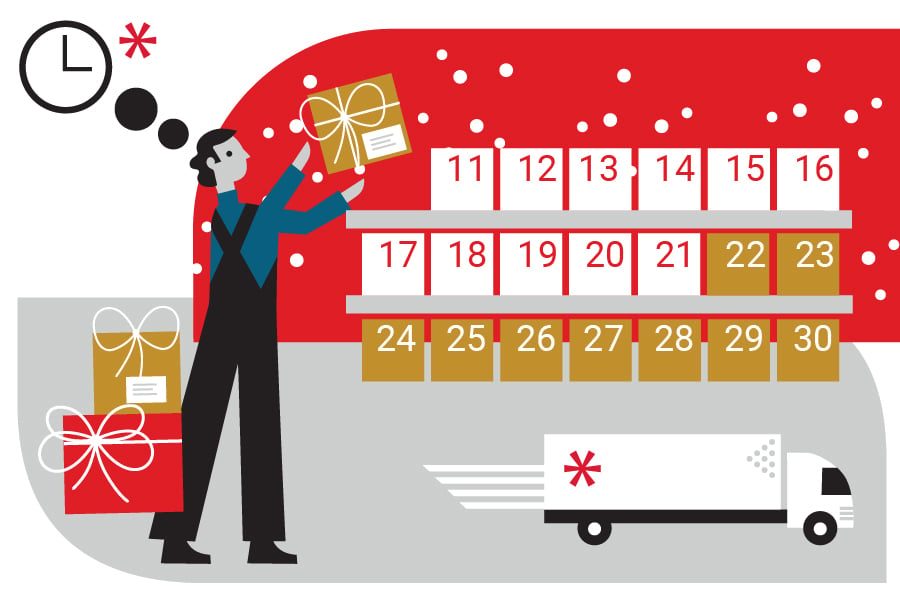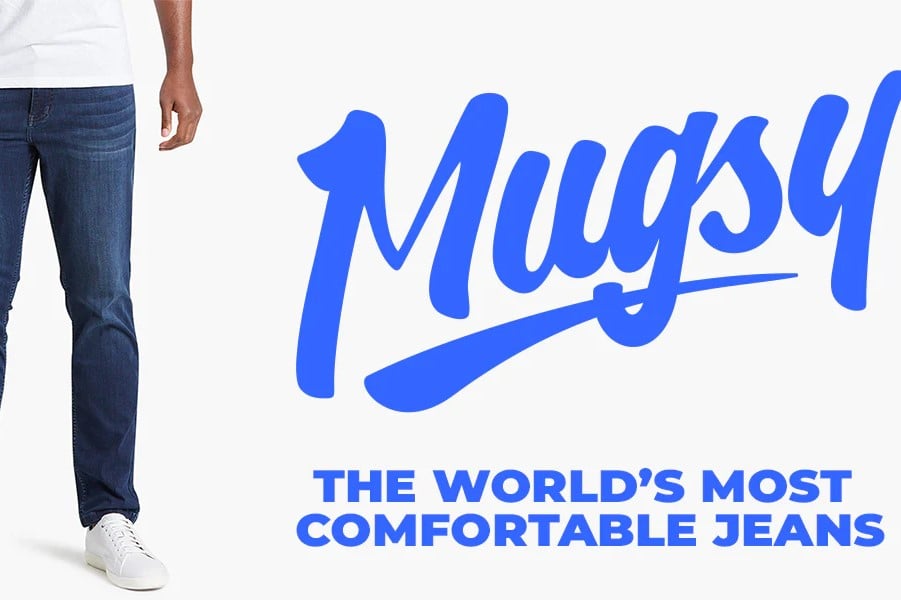[Updated post from January 26, 2021]
D2C (direct to consumer) fulfillment has made leaps and bounds over the past few years, with the stay-at-home restrictions of the COVID-19 pandemic now yielding to a long-term shift toward digital selling.
In 2022, direct to consumer sales exceeded $117 billion in the United States, with a forecast increase to $161 billion by 2024. With growth only heading in one direction (up) many traditional retailers have taken the step of launching their own D2C sales channels - with mixed results.
Although D2C brands appear primed for success thanks to lower overheads and a loyal following, it's a challenging task to scale the order fulfillment process effectively and avoid slowdowns in business growth. This is why many brands end up partnering with experienced fulfillment companies to ensure their direct to consumer fulfillment needs are taken care of.
In this post, we're going to define D2C fulfillment and explore the advantages and disadvantages of the D2C e-commerce model.
What is direct to consumer e-commerce?
D2C e-commerce is a sales model where a merchant is selling directly to their target market through digital channels, instead of via intermediaries such as retailers, wholesalers, or distributors. This can include companies that manufacture and sell their own products, as well as businesses that buy inventory from manufacturers to sell to consumers.
Thanks to the low barriers to entry, a growing proportion of e-commerce sales are made by direct-to-consumer brands that are bypassing traditional brick and mortar retailers. This has reshaped the e-commerce marketplace and put unique demands on order fulfillment operations.
The growth of the D2C model
COVID-19 has contributed to a surge in D2C e-commerce growth, with U.S. consumers spending over $1.7 trillion online during the first two years of the pandemic. However, this is the acceleration of an existing shift away from traditional retail stores.
As the cost of renting a physical storefront grows, emerging brands are choosing to launch online to lower their overheads and reach customers directly. A smaller, more flexible operation gives D2C brands some key advantages, namely being able to build customer-centric policies surrounding marketing, sales, quality assurance, and more.
As consumers increasingly prioritize convenience and multiple touchpoints with a brand, direct to consumer e-commerce is becoming the go-to channel. In fact, 55% of consumers say that they prefer to buy from a DTC brand rather than through an intermediary.
What is D2C fulfillment?
Direct to consumer (D2C) fulfillment is the companion workflow to D2C selling. This process sees customer orders placed directly with the brand that produces or sells the product, rather than through a stockist or distributor.
D2C brands are responsible for managing their inventory, as well as the picking, packing, and shipping of orders. This process can either be completed in-house, via drop shipping, or by outsourcing to a 3PL to coordinate the process on their behalf.
What does direct to consumer fulfillment look like?
Direct-to-consumer (D2C) fulfillment involves several steps, including:
Inventory receiving/storage. Inbound logistics involves managing fresh inventory when it comes into the warehouse and setting up pick locations for seamless order fulfillment.
Processing orders. Once a customer places an order, this must be forwarded to the warehouse for order fulfillment to begin. Order processing involves transferring orders from an e-commerce platform to a Warehouse Management System (WMS), usually via an integration.
Picking/packing. Once an order has been processed, items must be gathered from fulfillment centers and packaged for delivery. The pick and pack stage may include value-added services, like branded packaging or package inserts.
Shipping. Parcel carriers such as USPS, FedEx, or UPS can be contracted to pick up parcels from a warehouse. Shipping costs are one of the biggest overheads in D2C fulfillment, so brands need to find a balance between speed, and cost.
Reverse logistics. In addition to outbound logistics, D2C brands are also responsible for returns management and ensuring that customers receive funds for exchanged products promptly.
The pros and cons of D2C fulfillment
Direct to consumer e-commerce offers many competitive advantages, but there are some notable challenges that brands will need to overcome to find success. Read on to discover the pros and cons that you should be aware of when considering a direct-to-consumer fulfillment strategy for your business:
Advantage: Cheaper entry into the marketplace
D2C fulfillment eliminates the ongoing overheads that come with operating a physical retail location, meaning up-and-coming brands face fewer start-up costs.
It's entirely feasible for D2C brands to start selling and shipping products to online shoppers within a few hours, due to the ease of e-commerce platforms like BigCommerce or Shopify. In turn, merchants can pass these cost savings onto their customers in the form of lower prices, which helps to boost customer loyalty.
BUT: Difficulty in scaling
While launching a direct-to-consumer brand is quite easy, scaling up fulfillment in response to higher order volumes is tricky to manage independently. In e-commerce, valuable growth opportunities can appear virtually from nowhere, which requires a nimble fulfillment operation that can meet sudden peaks in demand.
However, most D2C brands start with in-house fulfillment operations with limited staff and storage space. This means there's limited time and resources to search for additional fulfillment center locations, which can result in fulfillment stagnating.
Advantage: Direct control over your brand presence
D2C businesses are in charge of selling products via their own channels, meaning they have full control over their brand's dialogue with customers. This makes it far easier for D2C brands to curate a consistent brand image across the entire customer journey, from browsing your website to the moment of delivery.
Direct communication channels like social media direct messaging, live chat, and email create much closer proximity to customers than a traditional retail distribution approach. This also gives brands valuable insights into what customers want – and the flexibility to act on these quickly to create a better customer experience.
BUT: Increased competition
There's a natural side-effect of D2C's independence and low barriers to entry – more brands are doing it. But as the e-commerce marketplace grows more saturated, it's become more difficult for a merchant to stand out from the crowd – especially for brands whose products can be bought from multiple vendors on the web.
When your chosen product categories are no longer a unique selling point, having a distinct brand identity and value proposition becomes essential to build a loyal customer base. With customer acquisition costs rising fast due to an overheated marketplace, there are going to be winners – and losers.
Advantage: Higher profit margins
One of the most attractive elements of the direct-to-consumer model is the ability of brands to cut out the middlemen. Wholesalers, retailers, and online marketplaces take a substantial slice of the cake – which means smaller margins and difficulty building sustainable revenue.
An integrated vertical for selling and distributing products allows brands to maximize revenue by keeping more revenue from each sale, meaning there is more to invest in your marketing and sales strategies.
BUT: It's all down to you.
While keeping all the fruits of your labor is a tempting prospect, there's a flipside to being fully independent: When you don't have stockists or distributors, all the hard work of selling, marketing, and fulfillment is on your shoulders.
Being a D2C brand is far more than just shipping goods from A to B. It's also managing relationships with suppliers, inventory levels, payment portals, and meeting customer expectations for a positive brand experience.
Managing all these details requires a strong organizational structure and expertise that might not be cost-effective for many D2C brands. This can stifle profit margins and take attention away from focusing on core business. This is where finding a reliable direct to consumer fulfillment partner makes all the difference to your prospects.
Want to set up your direct-to-consumer brand for success? Partner with Ryder
By partnering with a nationwide direct to consumer fulfillment company like Ryder, you'll get advanced support for navigating those tricky areas of D2C e-commerce. Our dedicated e-commerce management platform offers real-time visibility and inventory management capabilities, giving your business unparalleled insights into your operation for the best end-to-end customer experience:
"The Ryder platform offered us this unique interface where we could see what was happening in real time. It made us comfortable to make the switch because we knew that we didn't need to be close by to monitor what was happening." Eric Girouard, Founder and CEO of Brunt Workwear.
“Rad Power Bikes has seen massive growth every year since the company was founded, and as demand and interest for e-bikes has surged, we needed the ability to scale quickly. With a Seattle presence and a nationwide operation, Ryder was a clear choice for a fulfillment partner that allows us to deliver an unrivaled customer experience.” Mike McBreen, Chief Operating Officer at Rad Power Bikes.
"Faster turnaround has enabled us to scale up how many orders we can ship per day. Our biggest day so far with Ryder saw us ship between 19,000 to 20,000 orders during our January sample sale—a volume that would have taken around 14 days with our old 3PL. Despite the complexity of the implementation, the results were totally worth it." Jon-Mark Craddock, Director of Logistics at Tuckernuck.
If D2C fulfillment is starting to slow your business down, it may be time to begin outsourcing to a 3PL. Learn more about how Ryder can help by contacting us today.




